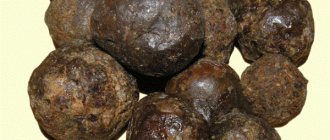Hello everyone! Today we’ll talk about how to get rid of a runny nose.
I think it will be very difficult to find people who have never experienced a runny nose.
Each of us, at least once, has experienced all the inconvenience that this terrible symptom of a cold gives us.
Sometimes a runny nose is so strong and manifests itself so severely that it prevents you from not only working normally, but simply living.
Therefore, for many, the question of how to get rid of a runny nose at home quickly, easily and effectively may become relevant already with the onset of the first cold weather.
So, let's look at all the possible ways to treat a runny nose, including home and folk remedies.
How to get rid of a runny nose at home?
First, a few words about what a runny nose is and why it occurs.
I will try to tell everything in simple and accessible language so that everything becomes clear to everyone.
What is a runny nose?
A runny nose is a protective reaction of our body, manifested by inflammation of the nasal mucosa, accompanied by mucopurulent discharge and sneezing. With the help of a runny nose, the body flushes viruses and bacteria out of the nose.
This is the first sign that some kind of infection has settled in our body and the body has begun to actively fight it (with the exception of allergic rhinitis).
Three stages of development of a runny nose
Conventionally, the process of developing a runny nose can be divided into three stages.
- Stage one
At the very beginning, a “mild” runny nose (clear discharge) can be completely prevented if preventive measures are taken in time to fight infection in the body (increasing immunity, rinsing the nose).
- Stage two
It begins if the virus has managed to penetrate the cells of the nose and caused an abundant release of water, this will invariably lead to the nasal mucosa swelling and causing severe swelling, which closes the nasal passages and prevents the passage of air into them.
Therefore, it is a big misconception to think that nasal congestion is the accumulation of a large amount of mucus in it. This is swelling of the nasal mucosa!
- Stage three
The third stage may include thicker nasal discharge (due to a large number of leukocytes - cells that fight infection). Usually in the third phase the virus dies and the runny nose goes away.
Therefore, before using home remedies to treat a runny nose, you need to clearly understand which ones will be most effective for you.
Types and causes of nasal congestion
There are many reasons for congestion. In addition to the common cold, these are inherited defects, consequences of injuries, and diseases. The following types are divided:
Morning. Breathing problems are felt upon awakening. This may be caused by intensive operation of heating devices and excessively dry air. To make breathing easier, use a humidifier or hang a damp towel on the radiator.
Night. When it is difficult to breathe at night, a person does not get enough sleep, which negatively affects well-being and performance. The causes of night congestion are chronic rhinitis or sinusitis, cysts, hypothermia or allergies. In addition, injuries and a deviated nasal septum can also cause difficulty breathing when lying down.
Allergy. Often the cause of congestion in one or both nostrils is an allergic reaction. It can appear at any age and is often accompanied by intense sneezing. To identify the allergen, special tests are performed. This condition requires immediate treatment.
Cold. One of the main signs of a cold is that a person cannot breathe normally. To treat such clogged nasal passages, 4-7 days are enough.
Sinusitis. People often confuse the common cold with acute sinusitis. If the congestion is complicated by a headache or discomfort in the area of the bridge of the nose, then the patient has sinusitis. This condition may also be accompanied by lacrimation. Sinusitis requires immediate treatment, as it can develop into a chronic form and lead to complications.
Vasomotor rhinitis. Congestion occurs when exposed to certain aromas, such as strong-smelling chemicals or smoke. It can also occur when inhaling excessively frosty air.
Simple ways to fight a runny nose at home
The first stage of a runny nose - the beginning
Let's start with the very first phase of the development of the disease, if the runny nose has just begun.
So, if a runny nose is only at the very beginning of its development, the best and most effective remedy that can help you is to rinse your nose with salt water, or best of all, sea water.
This method will help cleanse the nasal cavity of harmful bacteria and germs, moisturize the mucous membrane and prevent swelling.
Nasal rinsing - How to rinse your nose correctly?
For washing you will need:
- warm water - 1 glass
- sea salt - a little less than 1 teaspoon (if you use more you will get a cool composition)
- small syringe – 1 piece
Cooking method:
- Dissolve the salt in warm water, some add a few drops of iodine, and fill a baby syringe purchased at the pharmacy with the mixture.
- After this, rinse one nostril with a syringe, and then the other.
- It is advisable to learn how to do this so that the solution from one nostril flows smoothly into the other.
- A little practice and you will learn to do it professionally.
Scheme instructions on how to properly rinse your nose
Perform the procedure 2-3 times a day, usually within two, maximum three days, a slight runny nose will disappear completely.
The same procedure can be performed for children.
For convenience, you can also purchase any seawater-based nasal spray at the pharmacy.
Steam inhalations
The second remedy that can be effective in the very initial stages of the development of a runny nose is steam inhalation with essential oils.
They moisturize and warm the nasal mucosa, eliminating discomfort and increasing the functioning of the body's immune cells.
You can do this using special devices for inhalation or simply breathe through your nose over a bowl of hot water or an infusion of medicinal herbs, to which essential oils (eucalyptus, fir or mint) are added, 2-3 drops per liter, under a warm blanket.
Foot bath
At the early stage of the disease, when the first symptoms of a runny cold appear, a hot foot bath helps a lot, for which we will need:
- dry mustard – 2-3 tablespoons
- hot water – 1 basin
Preparation:
- To prepare, you need to add mustard powder to a bowl of hot water, dissolving it in water.
- Soak your feet for 10-15 minutes, then put on woolen socks and under a blanket.
- It’s good to immediately drink tea with honey or raspberry jam, allowing the body to sweat.
If you have good immunity and have taken these preventive measures, your runny nose will go away within two days.
The second stage - if the nose is stuffy and the runny nose lasts more than three days
First, it is necessary to relieve swelling of the nasal mucosa.
It is during this period of development of a runny nose that we experience the most severe discomfort.
Unfortunately, if at this time you cannot stay at home and have to work or study, you cannot do without vasoconstrictor drops or nasal sprays. They will be able to temporarily relieve swelling and reduce nasal discharge.
But, remember, such products should not be used for more than 10 days in a row and they have a number of contraindications!!! Ordinary sprays based on xylometazoline will help you.
Among home remedies for fighting a runny nose, the same rinsing of the nose with salt water (the more and more often we rinse, the faster we help our body get rid of the microbes inside it) and steam inhalations may be useful at this stage.
Also in this case, it is very effective to do acupressure for a runny nose, which I wrote about here
As well as various traditional medicines that have antimicrobial properties.
Let's look at some recipes.
conclusions
So, the cold, although the most common disease, can nevertheless cause serious damage to health if not treated correctly. Be attentive to the condition of your body, strengthen your immune system, and at the first symptoms of a cold, begin treatment with time-tested folk remedies. Herbal medicine mobilizes our internal reserves and serves as an excellent preventive measure. Folk recipes are simple and understandable to everyone, but in any case, accuracy is necessary. Use prescriptions only after consulting your doctor.
Homemade drops for runny nose - recipes
Some effective recipes for making homemade cold drops that you can prepare yourself at home.
Beetroot drops with honey
To prepare the miracle drop we will need the following ingredients:
- beets - 1 piece
- honey – 2-3 tablespoons ((depending on the size of the beets).
Preparation:
Grate the beets and squeeze the juice out of it, mixing with honey, at the rate of three parts beet juice to one part honey.
You should instill 3 drops 3 times a day; for children it is better to exclude honey from the composition, using only beetroot juice 2-3 drops 3 times a day.
carrot drops
To prepare the drops we will need:
- carrots – 1 piece
- garlic - in the amount necessary to form a few drops
- sunflower oil – 1 tablespoon
Preparation:
- Grate the carrots; you need to get 1 tablespoon of carrot juice.
- Squeeze the juice out of the garlic.
- After straining, mix all the available ingredients.
- Instill 3 drops 3 times a day into each nostril.
Garlic drops
To prepare the drops we will use:
- garlic – 5 cloves
- sunflower oil – 1 teaspoon
Preparation:
- Finely chop the garlic, then pour in 50 grams of boiling water, let everything sit in this form for 2-3 hours.
- Next, add sunflower oil to the infusion.
- The drops should be used 2-3 drops 3 times a day.
Honey drops
For preparation you will need:
- honey – 1 teaspoon
- boiled water – 1 teaspoon
Let's dilute the honey in water, after which you can use the drops.
Ideally, you can take manuka honey with an activity of 20.
Place 2-3 drops in each nostril 3 times a day. People who are allergic to honey should avoid using this recipe.
Grandmother's drops from aloe leaves
I want to tell you about one recipe for drops that our grandmothers used, these are drops from aloe, which used to be in almost every house on the window.
- To prepare the drops we will need: aloe – 2-3 leaves, depending on the size
- Squeeze the juice from aloe, strain through cheesecloth and instill 2-3 drops into each nostril 4-5 times a day.
- It is better not to cook a lot of drops, as they spoil quickly, prepare for one day
Bay drops
To prepare the drops you will need:
- honey – 1 tablespoon
- bay leaf – 15-20 pieces
- boiling water – 200 grams
Pour boiling water over the dry bay leaf and let it brew for 30 minutes. After the composition has infused and cooled, add honey to it.
Application: drops should be applied 2-3 in each nostril 3 times a day.
Kalanchoe drops
- In order to prepare the drops we need: Kalanchoe leaves - 1 tablespoon
- Squeeze the juice from the leaves of Kalanchoe and dilute it in equal proportions with water - the drops are ready.
- Application: instill 2-3 drops into each nostril 3 times a day.
Read more about how to use Kalanchoe leaves for a runny nose in this post.
Onions and garlic - natural medicines
Folk remedies for nasal congestion use different parts of plants that have antibacterial and antiviral properties. Onions and garlic work great against infection. For example, during epidemics, peeled slices are laid out on saucers and placed in the house. Another method is suitable for getting rid of a runny nose. First, garlic cloves and juicy onion scales should be chopped, the pulp should be placed in cheesecloth and the juice should be squeezed out of it. Before use for instillation into the nose, dilution with water in a ratio of 1:50 is required, otherwise it will burn the mucous membrane.
A mixture of garlic and sunflower oil is also prepared to relieve nasal congestion in a child or adult. Four medium-sized cloves of garlic should be mixed with ½ cup of boiled and cooled sunflower oil. It will take about 3 hours to extract useful substances. The product can then be filtered and used to lubricate the nasal passages using a cotton swab.
Folk remedies for colds and runny nose
And I also want to share with you effective folk remedies that will help fight not only the runny nose, but also colds.
Propolis for a runny nose
To do this, you need to prepare propolis ointment or oil, apply it to cotton wool and insert it into each nostril. And also lubricate the wings of the nose at night.
Iodine mesh against runny nose
Surely everyone's mother painted their nose in war paint as a child, like an Indian? We simply draw a grid with iodine using a match on the nose overnight.
Don’t worry, usually by morning you can’t see anything.
Mustard plasters on feet
One of the good ways to combat colds is to put mustard plasters or, better yet, pepper plaster on the heels and calves.
This method is good because it can be used even while at work, that is, outside the home.
Foot massage
An interesting option for getting rid of symptoms such as a runny nose and colds in general is a foot massage.
In Eastern practices, great importance is given to the feet, since they represent the projection of organs, influencing certain points of which they achieve a significant improvement in health.
And so we apply a warming medicinal balm or just a “star” to the area of the heel, big toe and pad behind the toes, actively massaging these areas.
Then we put on woolen socks under the blanket. You can also drink hot tea with honey and work up a sweat.
Mustard socks
This method of treatment has been known to many since childhood; you will need mustard powder for it.
Pour mustard powder into each sock, a couple of tablespoons each, and quickly into bed. This method can be used many times, but in the absence of fever.
Hot baths
These baths are used in the first few days, when you first get sick, in this case the effect of them is higher.
- Pour hot water into a suitable container for our hands, adding 1 teaspoon of soda to it. (more about soda here)
- Dip your hands into the container, preferably so that they are completely hidden by water. Perform the procedure up to 3 times a day for 15 minutes.
Grandma's flatbreads
Many people remember how in childhood their grandmother prepared cakes from honey, I always thought that they were prepared to eat, but they were always used for something else.
So, we will need:
- honey – 1 tablespoon
- dry mustard powder – 1 tablespoon
- flour
- sunflower oil – 1 tablespoon
Preparation:
- To prepare the flatbreads, mix flour, mustard and honey, add sunflower oil.
- Flour in this case serves as a binding element, so its quantity is regulated depending on the formation of the shape of the cake.
- Place the prepared mixture in two pieces of gauze and place on the sinuses. Keep for 10-15 minutes.
Warming the sinuses with chicken eggs
There is also a method that was used to treat a runny nose in childhood, these are chicken eggs.
Boil 2 eggs hard, then place them in a cloth (thin towel) so as not to get burned and keep them on the sinuses until they cool down.
Potato inhalation
A method as old as this world, boil the potatoes in their skins, leaving them in the pan, climb under the blanket and breathe until the potatoes cool down. Use only if there is no fever.
Garlic inhalation
An interesting and simple way to eat it is also using garlic.
To do this, you need to cut a medium-sized clove of garlic into the palms and insert them into the nostrils, not too deep so that you can easily pull them out.
Of course, these are not all the folk methods that can be used to treat a runny nose at home.
The main thing to remember is that if your runny nose does not go away within a month, there may be a risk of developing sinusitis - inflammation of the paranasal sinuses, sinusitis and otitis media. Therefore, to avoid all these problems, do not engage in long-term self-medication and be sure to see a specialist.
Treatment tips
When treating a cold, it is important to remember one simple rule: treatment must be comprehensive. It is best to use several methods simultaneously, after first checking how they fit together.
We must not forget about nutrition. Doctors recommend making adjustments to your diet during a cold: eliminating heavy foods, eating mainly vegetables, fruits, salads, drinking more, preferring diaphoretic teas and freshly squeezed juices.
Even the mildest form of a cold is recommended to be treated after consultation with a doctor. With self-treatment, you can get complications that will then torment you for the rest of your life.











